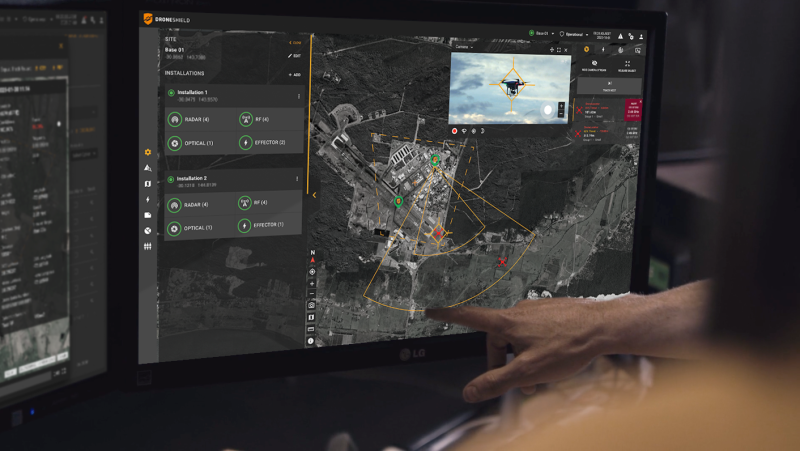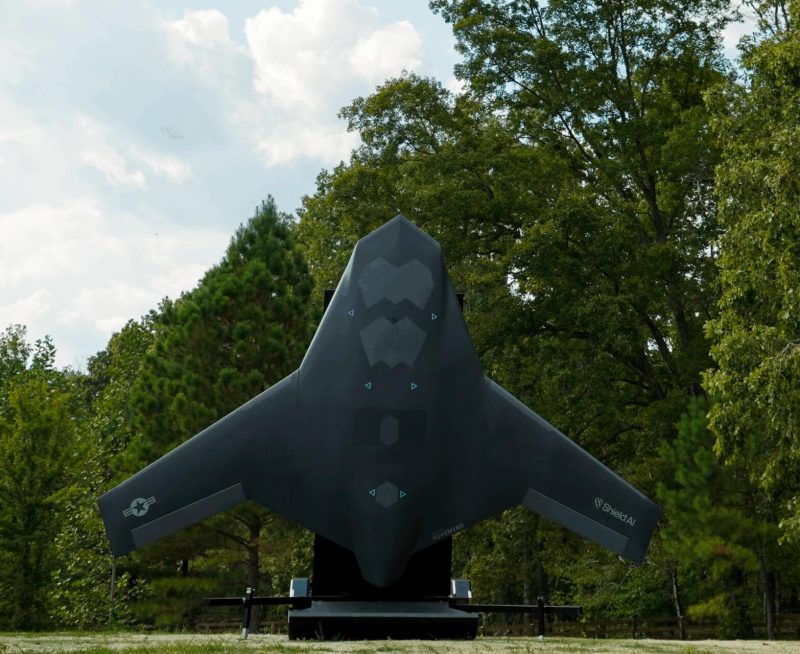Shield AI has unveiled its new X-BAT, an autonomous, AI-piloted, Vertical Take Off and Landing…

DroneShield integrates ADS-B into DroneSentry-C2 software
Sydney based DroneShield has announced the integration of Automatic Dependent Surveillance–Broadcast (ADS-B) into its counter Uncrewed Aerial System (C-UAS) ecosystem. The integration fuses traditional aviation surveillance data with counter-drone detection, allowing operators to intuitively differentiate legitimate aircraft from potential drone threats.
ADS-B is a widely adopted air traffic monitoring technology, used globally to broadcast the identity, position, altitude, and velocity of crewed aircraft. By receiving and fusing ADS-B data into DroneSentry-C2, DroneShield’s Software as a Service (SaaS) enabled Command and Control (C2) platform can now provide operators with a clearer picture of both crewed and uncrewed activity in shared airspace, the company says.
This reduces the risk of misidentification and enhances operator confidence when making time-critical decisions. The update comes as DroneShield has unveiled its DroneSentry-C2 Enterprise and several updates to its C2 software, earlier this month, as part of its regular quarterly software update cycle.
“Integrating ADS-B data reflects our vision for a future of comprehensive airspace awareness,” says Angus Bean, Chief Product Officer at DroneShield. “By expanding DroneSentry-C2’s capabilities to include both crewed and uncrewed aviation ADS-B data, we are adding to our customers situational awareness that they need to make faster, safer, and more confident decisions in complex environments.”
The need for integrated airspace awareness has been underscored in recent years, including high-profile incidents in the United States where unclassified aerial objects near sensitive sites triggered widespread concern, DroneShield points out. In environments where distinguishing between drones, conventional aircraft, and other aerial phenomena is becoming increasingly critical, DroneShield’s integration of ADS-B with multi-sensor counter-drone detection provides additional clarity and control for users, the company says.
For public safety agencies, emergency services, and critical infrastructure operators, the integration supports further awareness in mixed airspace missions such as disaster response, emergency medical transport, and major event security. For defence and government customers, it reinforces airspace awareness while expanding the operational relevance of counter-drone solutions.
DroneSentry-C2, the company’s rapidly scaling C2 platform, is built on DroneShield’s proprietary artificial intelligence engine, SensorFusionAI (SFAI). DroneSentry-C2 ingests and cross-references data from radio frequency, radar, optical, and now ADS-B sources, creating a single operational picture that reduces false alarms and increases the range of effective response options available to end users, highlighting DroneSentry-C2’s role as more than a display tool, the company says.
DroneShield has also launched its latest White Paper: Best Practices for Counter-Drone Deployment at Civil Airports. This was developed to help airports and regulators worldwide understand the scale of the drone threat, the technology available now, and the best practice frameworks available to address it.



